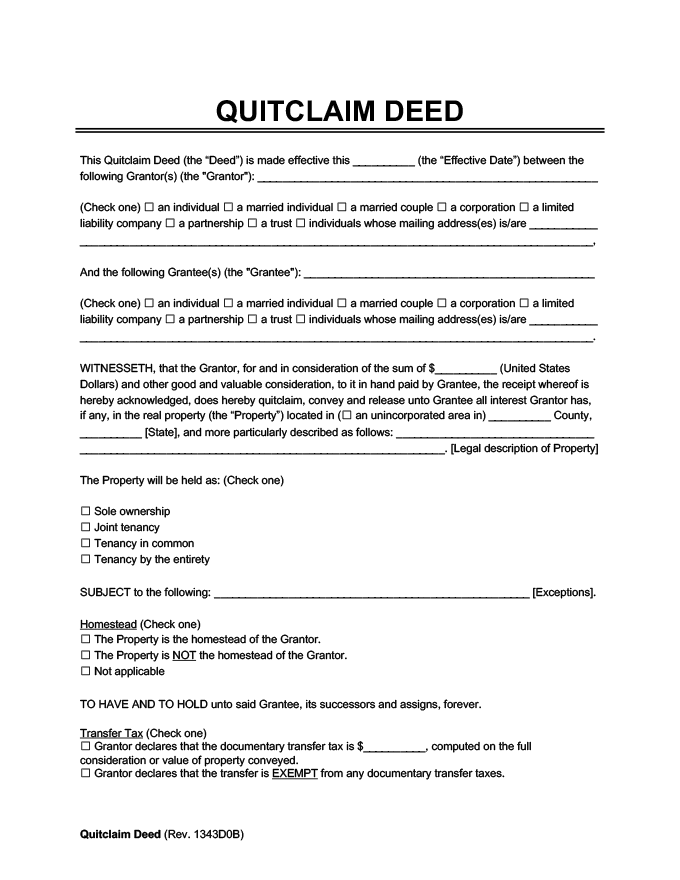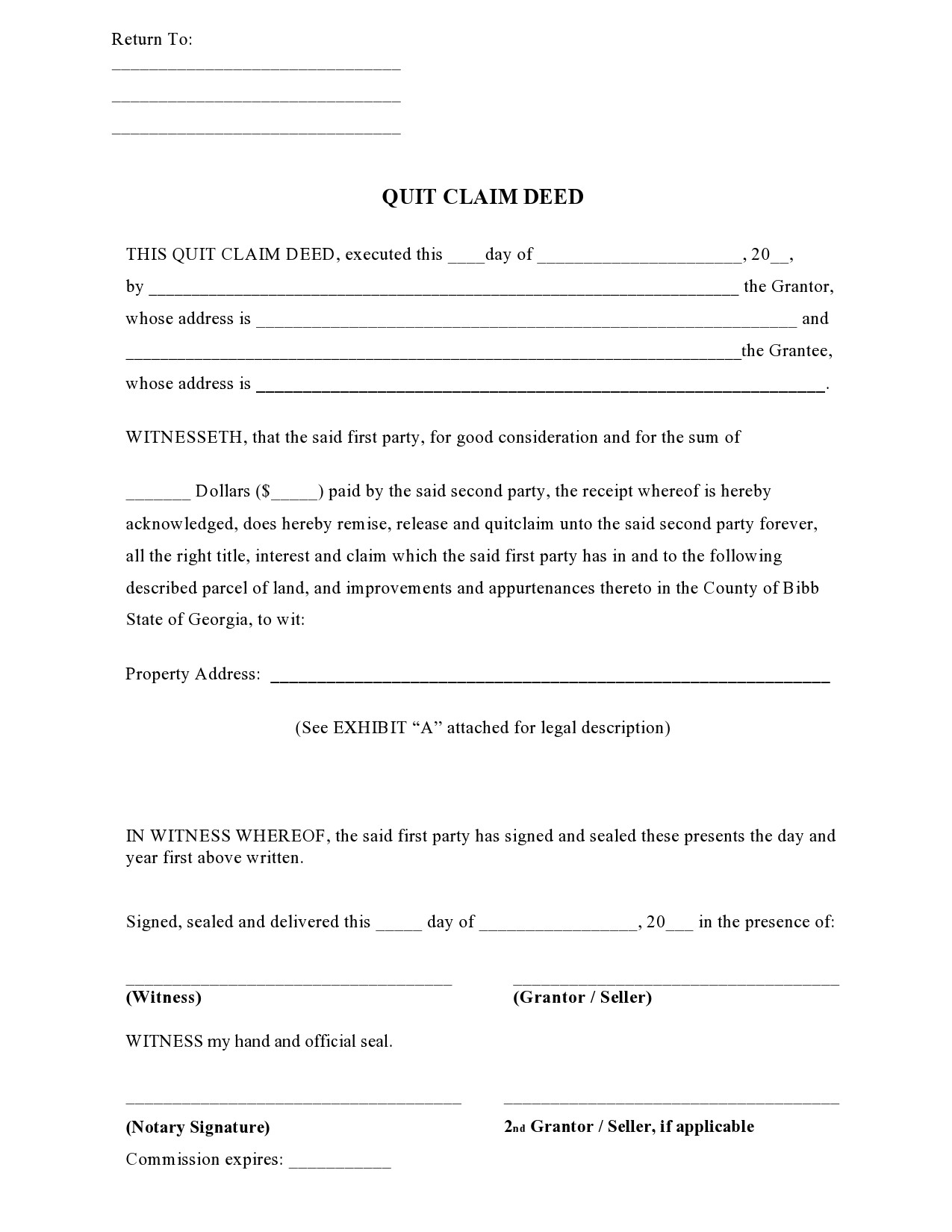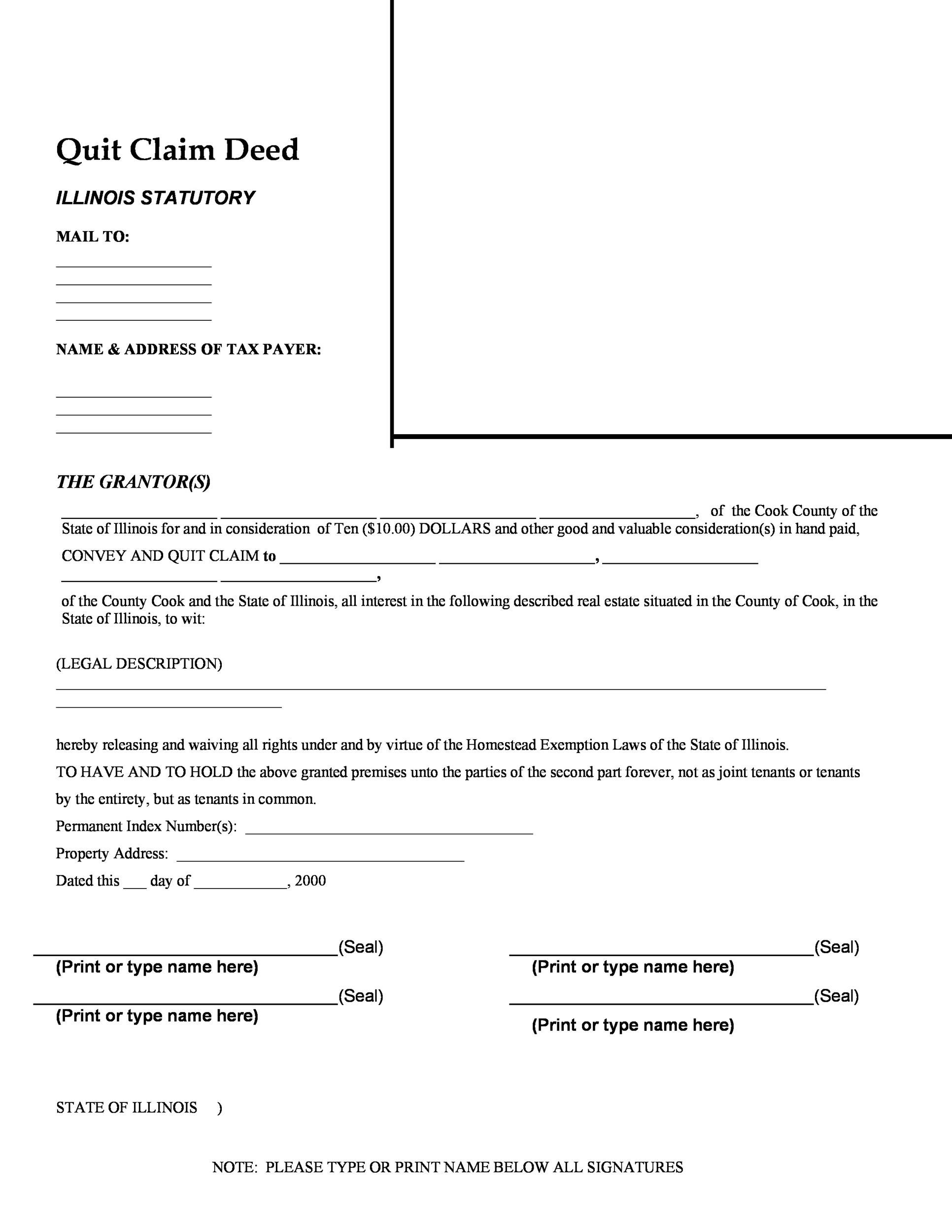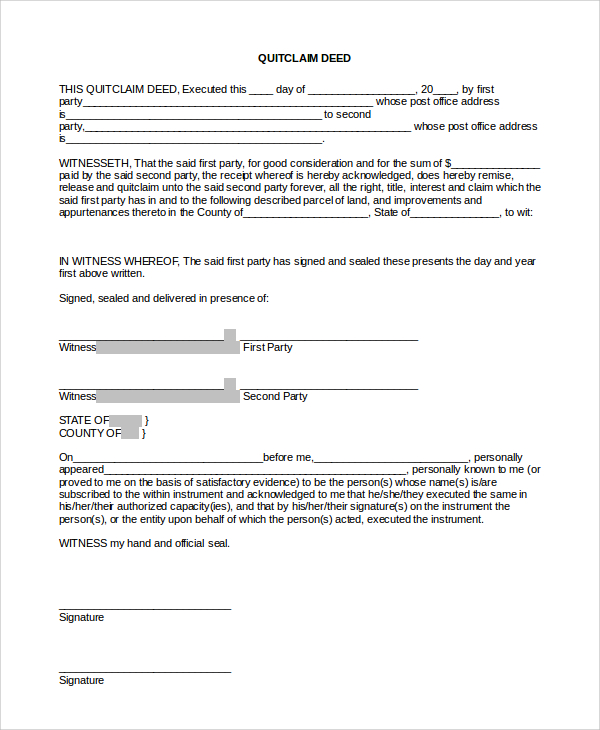When transferring the title of a property from one person to another, a quit claim deed form is a popular option. This legal document allows the grantor, the person giving away the property, to transfer their current deed to the grantee, the person receiving the property. Unlike other types of deeds, a quit claim deed does not offer the same level of buyer protection, as it transfers the title without any amendments or additions.
In this article, we will explore everything you need to know about a quit claim deed form, including how to use it, why it may be beneficial, and tips for a successful transfer.
What is a Quit Claim Deed Form?
A quit claim deed form is a legal document that facilitates the transfer of property ownership from one party to another. This type of deed is often used in situations where the grantor wants to transfer their interest in a property with little to no buyer protection. By using a quit claim deed form, the grantor essentially gives up any claim they may have on the property and transfers their ownership rights to the grantee.
A quit claim deed form can be easily found online and downloaded for free. It typically contains sections for the names and addresses of both the grantor and grantee, a description of the property being transferred, and any terms or conditions of the transfer. The form must be signed and notarized to be legally binding.

Why Use a Quit Claim Deed Form?
There are several reasons why someone might choose to use a quit claim deed form:
- Transfer within a family: Quit claim deeds are commonly used when transferring property between family members, such as from parents to children or between siblings.
- Divorce or separation: In cases of divorce or separation, one party may use a quit claim deed to transfer their interest in a jointly owned property to the other party.
- Clearing up title issues: Quit claim deeds can be used to resolve title issues, such as removing a cloud on the title or correcting a previously incorrect deed.
- Transferring property to a trust or LLC: Property owners may choose to transfer their property into a trust or limited liability company (LLC) for estate planning or liability protection purposes.
- Transferring property to a new owner: A quit claim deed can be used to transfer property to a new owner without the need for a traditional sale or purchase agreement.
How to Use a Quit Claim Deed Form
Using a quit claim deed form is a relatively straightforward process.
Here are the general steps:
- Download and print the form: Find a quit claim deed form online and download it. Print out the form on standard letter-sized paper.
- Fill in the necessary information: Enter the names and addresses of the grantor and grantee, as well as a detailed description of the property being transferred. Include any additional terms or conditions, if applicable.
- Sign the form: Both the grantor and grantee must sign the form in the presence of a notary public. This is to ensure the legality and validity of the document.
- File the deed: Once the form is signed and notarized, it should be filed with the appropriate county recorder’s office or land registry office. This will officially transfer the property ownership.
Examples




Tips for a Successful Transfer
When using a quit claim deed form, it’s important to keep the following tips in mind for a successful transfer:
- Consult with a legal professional: While quit claim deeds are relatively simple documents, it’s always a good idea to consult with a lawyer or real estate professional to ensure you understand the implications and potential risks involved in the transfer.
- Research the property: Before transferring a property, it’s important to research its history, including any outstanding debts, liens, or encumbrances that may affect the transfer.
- Obtain title insurance: Consider obtaining title insurance to protect yourself against any unforeseen issues that may arise after the transfer is complete.
- Keep copies of the deed: Make sure to keep copies of the signed and notarized quit claim deed for your records.
- Notify relevant parties: Inform any relevant parties, such as mortgage lenders or homeowners associations, about the transfer of ownership.
Conclusion
A quit claim deed form is a useful tool for transferring property ownership from one person to another. While it may not offer the same level of buyer protection as other types of deeds, it can be a convenient option in certain situations.
By understanding how to use a quit claim deed form and following the necessary steps, you can successfully transfer property without the need for a traditional sale or purchase agreement.
Quit Claim Deed Form – Download